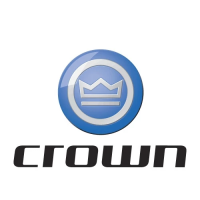
Do you have a question about the Crown I-Tech 4x3500 HD and is the answer not in the manual?
| Channels | 4 |
|---|---|
| Power Output (per channel at 4 ohms) | 1900W |
| 4Ω Stereo (per channel) | 1900W |
| 8Ω Bridge-Mono | 3800W |
| Signal to Noise Ratio | >100dB |
| Signal to Noise Ratio (A-weighted) | >103dB |
| Input Sensitivity | 1.4V |
| Weight | 28 lbs (12.7 kg) |
| Frequency Response | 20Hz - 20kHz, ±0.5dB |
| Input Impedance | 20k ohms balanced, 10k ohms unbalanced |
| Cooling | Variable-speed fan |
| Cooling Method | Continuously variable speed fan, front-to-rear airflow |
| Protection | Thermal, overload, and short circuit protection |
| Dimensions | 19" x 3.5" x 16.2" (483 mm x 89 mm x 411 mm) |
| Weight (alternative) | 12.7 kg |
| Power Requirements | 100V-240V, 50/60Hz |
| Connectors | XLR |
| Networking | Ethernet |
| DSP | Yes |
Caution regarding strong magnetic fields that can induce hum into nearby equipment.
Statement regarding compliance with FCC rules for radio frequency energy.
List of EMC compatibility standards applied to the apparatus.
List of safety standards applied to the apparatus.
Overview of key features and capabilities of the I-Tech HD Series amplifier.
Guidance on effectively using the operation manual for setup and operation.
Instructions for unpacking, inspecting, and physically installing the amplifier unit.
Guidance on safely connecting the amplifier to the AC power source.
Fundamental principles and recommendations for input and output wiring.
Guidance on selecting appropriate wires and connectors for input signals.
Guidance on selecting appropriate wires and connectors for output signals.
Instructions for wiring speakers in stereo mode using binding posts or Speakon connectors.
Procedure for configuring and wiring the amplifier for bridge-mono operation.
Introduction to HARMAN's GreenEdge initiative and its environmental commitment.
Discussion of the efficiency benefits and features of GreenEdge technology.
Examples and data illustrating energy, weight, and greenhouse gas savings.
Methods and settings to prevent speaker damage from clipping and subsonic signals.
Steps for initial startup and important precautions for safe operation.
Detailed explanation of all front panel controls, buttons, and status indicators.
Detailed explanation of all back panel connections, controls, and status indicators.
Navigating the LCD screen, understanding touch functions, and menu tree structure.
Performing basic operations and understanding example procedures using the LCD.
Configuring sample rate, input sensitivity, presets, and amplifier modes.
Configuring network parameters, HiQnet addresses, and DHCP settings.
Managing presets, transferring files via USB, and understanding system messages.
Introduction to the LevelMAX Limiter Suite's types and modes of operation.
Diagnosing and resolving issues related to the power indicator and power switch.
Interpreting thermal and fault indicators and understanding possible causes.
Troubleshooting steps for situations with no sound despite power and signal presence.
Table detailing minimum power output specifications across various load conditions.
Technical performance metrics including sensitivity, gain, frequency response, and distortion.
Details on ventilation, cooling, physical dimensions, weight, and shipping information.
Overview of amplifier's protection and diagnostic features like TLC, circuit breaker, and fan monitoring.
Details on the global power supply, its benefits, and Power Factor Correction.
Explanation of the Class I circuitry, its efficiency, and performance advantages.
Introduction to HiQnet networks, their advantages, and functions for controlling audio devices.
Overview of CobraNet protocol for digital audio transmission over Ethernet networks.
Introduction to the LevelMAX Limiter Suite's types and modes of operation.
Detailed configuration of peak, RMS, and thermal limiting parameters and thresholds.
Introduction to Finite Impulse Response (FIR) filters and their advantages in DSP crossovers.
Comparison of Infinite Impulse Response (IIR) and Finite Impulse Response (FIR) digital filters.
Discussion of ideal characteristics for FIR filters, particularly linear phase response.
How FIR filters achieve steep slopes and narrow crossover overlaps for improved driver performance.
Demonstration of FIR crossover magnitude and phase response with driver measurements.
Summary of the benefits of using FIR filters for sophisticated crossovers.
Procedures for obtaining service from authorized centers or Crown for international and Canadian customers.
Options for obtaining service within the US: Service Center or Factory.
Detailed instructions for packing and shipping products for factory service.
Overview of the 5-year no-fault warranty terms and conditions for new Crown products.
Details on conditions and damages not covered under the warranty.
Explanation of Crown's commitment to remedy defects through repair, replacement, or refund.

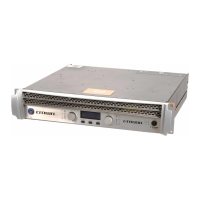
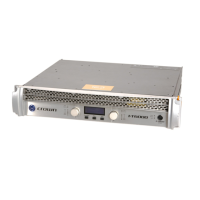

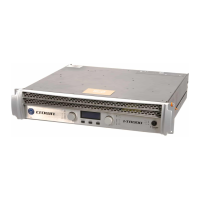


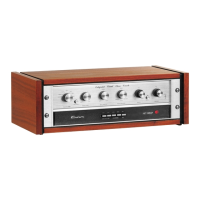
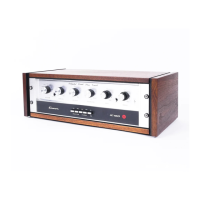
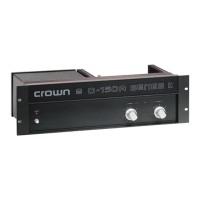
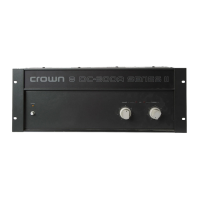
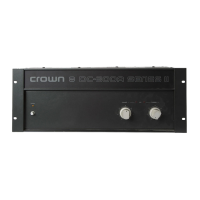
